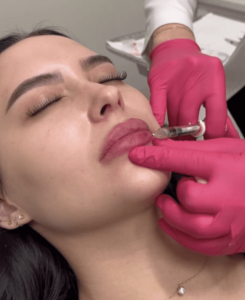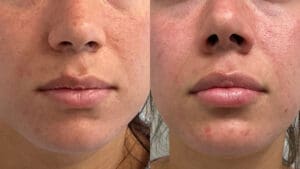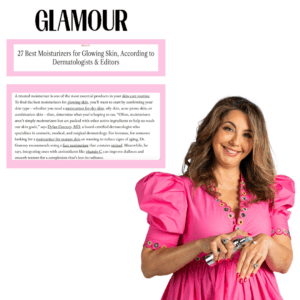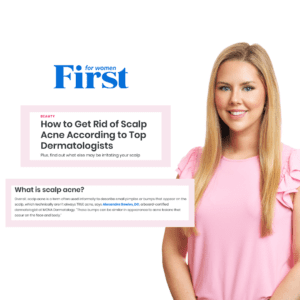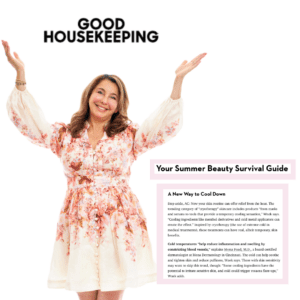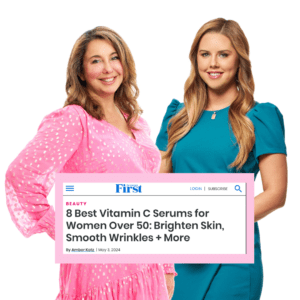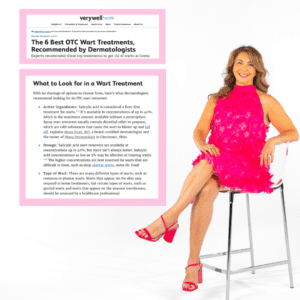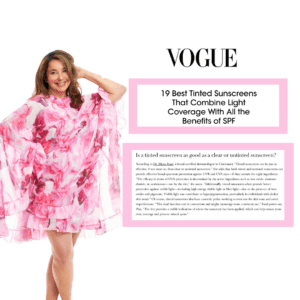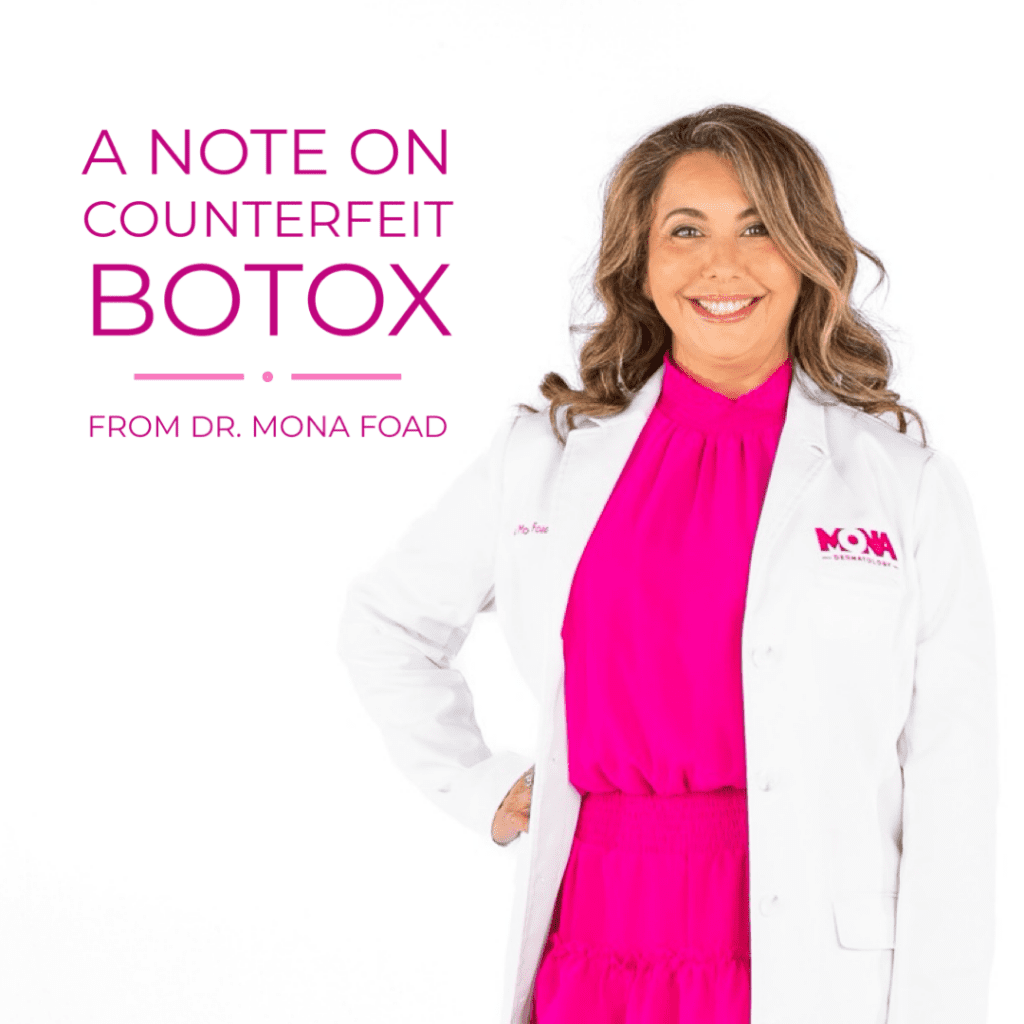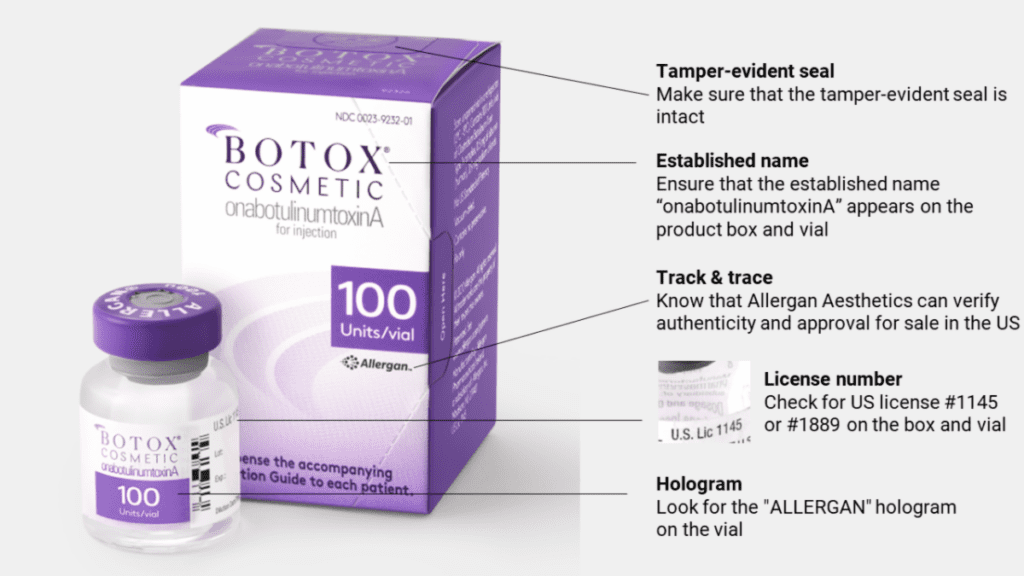The 12 Best Sunscreens | Featured In Everyday Health
Dr. Mona Foad expands upon the insights she shared in her recent feature in Everyday Health: The 12 Best Sunscreens for All Budgets, Skin Tones, and Skin Types.
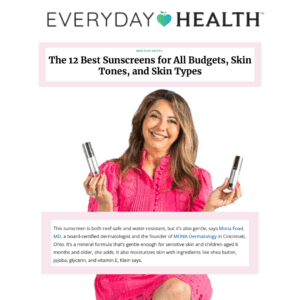
What are the best active ingredients to look for in a sunscreen?
Some of the best active ingredients that you can find in sunscreen include Zinc Oxide and Titanium Dioxide. These ingredients provide protection into the UVA spectrum. As mineral sunscreens, they are also less likely to cause allergic reactions when applied. If you don’t want to use mineral based sunscreen but still want UVA protection, look for Avobenzone as an ingredient.
Avobenzone is a chemical sunscreen that protects against UVA rays. It is often used in combination with other chemical sunscreens that protect against UVB rays. Zinc Oxide is my favorite because it protects against both UVA and UVB rays. Sunscreens are divided into physical blocks and chemical sunscreens. Physical sunscreens, such as zinc oxide and titanium dioxide, protect the skin against UVA and UVB rays by deflecting the sun’s rays. They also provide instant protection against sun damage to the skin and preventing sunburn and sun damage in the process. Avobenzone, a chemical sunscreen ingredient used as a UV filter, helps to protect the skin from harmful rays by absorbing the UVA rays. Octocrylene, a chemical filter, helps stabilize Avobenzone and absorb UVA rays and is often included to make a sunscreen more water resistant.
Which sunscreen ingredients should I avoid?
The most concerning sunscreen ingredient is oxybenzone because it is easily absorbed through the skin even after sunscreen has been applied. This increases the risk of skin irritation and long-term health effects. Oxybenzone has been shown to be systemically absorbed 50-100 times higher than other sunscreens. Both Oxybenzone and octinoxate have both been banned from use in Hawaii.
What should I look for when buying a sunscreen?
When trying to select the best sunscreen for your skin, make sure the label says “Broad Spectrum,” meaning the sunscreen can protect your skin from both UVA and UVB rays and “SPF 30 or higher” to provide better protection. You do not necessarily need a sunscreen that is higher than spf 50 because the percentage increase in protection is minimal past that.
I would choose a sunscreen that works with your skin type. If you are oily, you may want to choose a lighter weight sunscreen or one that is water based, whereas one that is more moisturizing may be better if you are more dry. If you have sensitive skin or have rosacea, I would stay away from chemical sunscreen and use mineral sunscreens with zinc oxide or titanium dioxide. Finally, if you have melasma, I would use a tinted sunscreen because the iron oxides can protect your skin from infrared as well as the UV Rays. If you are going to be in the water or more sweaty, you may want to look for one that is more “water resistant”.
Dr. Mona’s Top Sunscreen Recommendations:
- Best Tinted: Sunforgettable Total Protection Face Shield Flex SPF 50
- This lightweight tinted sunscreen combines mineral sunscreens and antioxidants to protect your skin against UV rays, Infrared and Blue light with their patented EnviroScreen® Technology. This sunscreen comes in 4 shades, fair, medium, tan and deep, and magically adapts to your skin color. This sunscreen is safe for all skin types.
- Best for Acne-Prone Skin: EltaMD UV Clear Broad-Spectrum SPF 46
- This is a fan favorite for people who want protection but do not want to feel like they are wearing sunscreen. If you are acne prone, you may opt for a lighter weight product such as the Elta MD UV Clear formulated with 9% zinc oxide and 5% Niacinamide (Vitamin B3) to help reduce the appearance of blemishes and discoloration on your skin. This broad spectrum sunscreen contains micronized zinc oxide to protect your skin from damaging UVA (aging) and UVB (burning) rays. It is fragrance-free, paraben-free and non-comedogenic.
Other Recommendations:
- Best Reef Safe: Stream2Sea EcoStick Sunscreen Sport SPF 35+
- Hawaii has banned many chemical sunscreen components such as oxybenzone and octinoxate due to their deleterious effect on the coral reef. This lightweight, water resistant stick has been formulated with EcoSafe Zinc™, a non-nano, naturally-coated, USP grade certified zinc oxide that has passed rigorous aquatic safety testing to be reef safe. It is fragrance free, great for sensitive skin and has the added benefit of having an antioxidant blend to help further protect your skin.You can use this and feel good that you are protecting your skin as well as the environment.
- Best Body and Best for Children: Love Sun Body Sheer Perfection Mineral Body Sunscreen SPF 50
- This is a great non greasy mineral based sunscreen that uses a non nano zinc oxide and non nano titanium dioxide to protect your body and face. Approved for use 6 months and up, this lightweight sunscreen is easy to rub in and does not leave a messy white cast all over your body. I love that it is reef safe as well and is good for all skin types, including sensitive skin.
- Best Tinted: La Roche-Posay Anthelios Mineral Tinted Sunscreen for Face SPF 50
- This mineral based sunscreen uses patented Cell-Ox technology with titanium dioxide and an antioxidant blend to protect against UV rays. Titanium dioxide is well tolerated by most skin types, including sensitive skin, and the iron oxide in titanium dioxide protects against infrared and creates a nice tint for extra coverage.
Does the form of sunscreen make a difference?
In some ways, the form of sunscreen does matter, as it can impact its effectiveness, application, and coverage. The most common forms of sunscreen are lotions and creams, which are best for full-body application. They are easy to apply, and their density ensures better skin coverage and protection.
Sprays are a more convenient option because they are quick and easy to use, especially for children. The disadvantage of spray sunscreens is the lack of even application. To ensure proper protection, spray a very generous amount of sunscreen and rub it into the skin. It would also be better to apply a spray sunscreen indoors as opposed to outside. When applying outside, the wind may disperse an aerosolized sunscreen spray.
Stick sunscreens are great for sensitive areas around the eyes, face, ears, and lips. As long as the sunscreen is chemical-free, it should not cause skin irritation. Brush on sunscreens can be a great way to touch up sunscreen during the day without disturbing makeup. Brush on sunscreens are also a favorite among golfers, because they do not leave any residue on your hands. Sticks and brush on are convenient, mess-free, and easy to apply. Ultimately, whatever your preference for sunscreen may be, you must apply sunscreen generously and consistently to ensure that your skin is protected from UV radiation.
Is it okay to go outside without sunscreen on?
Generally speaking, if not applying any form of sunscreen, try to limit exposure to 5-15 minutes at a time, 2-3 times a week. Walking to your car from your office or getting your mail might not require you to apply sunscreen, but if you know you will be outside for more extended periods of time, especially during peak sun hours, applying sunscreen is crucial.
Also, certain medications, a history of skin cancer, or sensitive skin can increase sun sensitivity and skin reactions. It’s equally important that individuals who fit into these categories use sunscreen generously when outdoors.
What are common mistakes people make with sunscreen?
I think one of the biggest mistakes people should avoid when applying sunscreen is using too little. Most people only apply 25-50% of the recommended amount of sunscreen. To ensure full body coverage, most adults need about one ounce of sunscreen.
Another common mistake to avoid is applying sunscreen only in sunny weather. The sun emits harmful UV rays all year. Even on cloudy days, up to 80% of UV rays can penetrate your skin. To protect your skin and reduce the risk of skin cancer, apply sunscreen even on cloudy days.
The effectiveness of sunscreen decreases over time and when exposed to high temperatures or sunlight. As a result, make sure you are not using an expired sunscreen. Most sunscreens expire within 1 year. For this same reason, it is also important to reapply sunscreen regularly when outdoors, in the water, or doing an outdoor activity.

